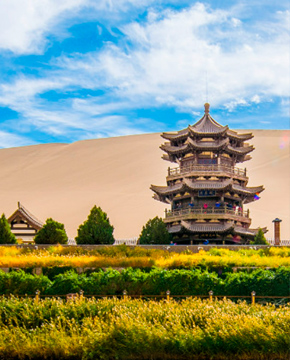Tekes Bagua City is located in the Tekes Basin in the western corner of the northern foothills of the Tianshan Mountains in Xinjiang. The city is famous for its unique bagua layout, and its name "Tekes" means "many wild goats" in Junggar language, and "wild water sources" in Mongolian language.
Tekes Bagua City is a place full of folk customs, history, culture and natural scenery. It is the largest and most complete Bagua City in the world, and a place where the culture of Usun and I Ching are intertwined. The city is also known as the westernmost Bagua City and seat of the I Ching culture in China, as well as the westernmost place where Chinese Taoist culture has spread.
Tekes Bagua City became the only city in the world without traffic lights when they were removed from the roads in 1996. This is because the roads are connected, so vehicles and pedestrians can get to their destinations no matter which direction they go, so there is no need for traffic lights to control traffic.
In addition, Tekes Bagua City is also rich in tourism resources. These include the Qiongkushtai National Historic and Cultural Village, a village with a unique architectural style that retains many of the wooden houses that characterized the Kazakh nomads in the 1950s and 1960s. There is also the Kalajun Ecological Prairie, a typical alpine five-flower meadow natural prairie with a total area of 2,848 square kilometers, which is regarded as "one of the rare alpine natural high-quality prairie in the world" by the officials of the Food and Agriculture Organization of the United Nations (FAO).



